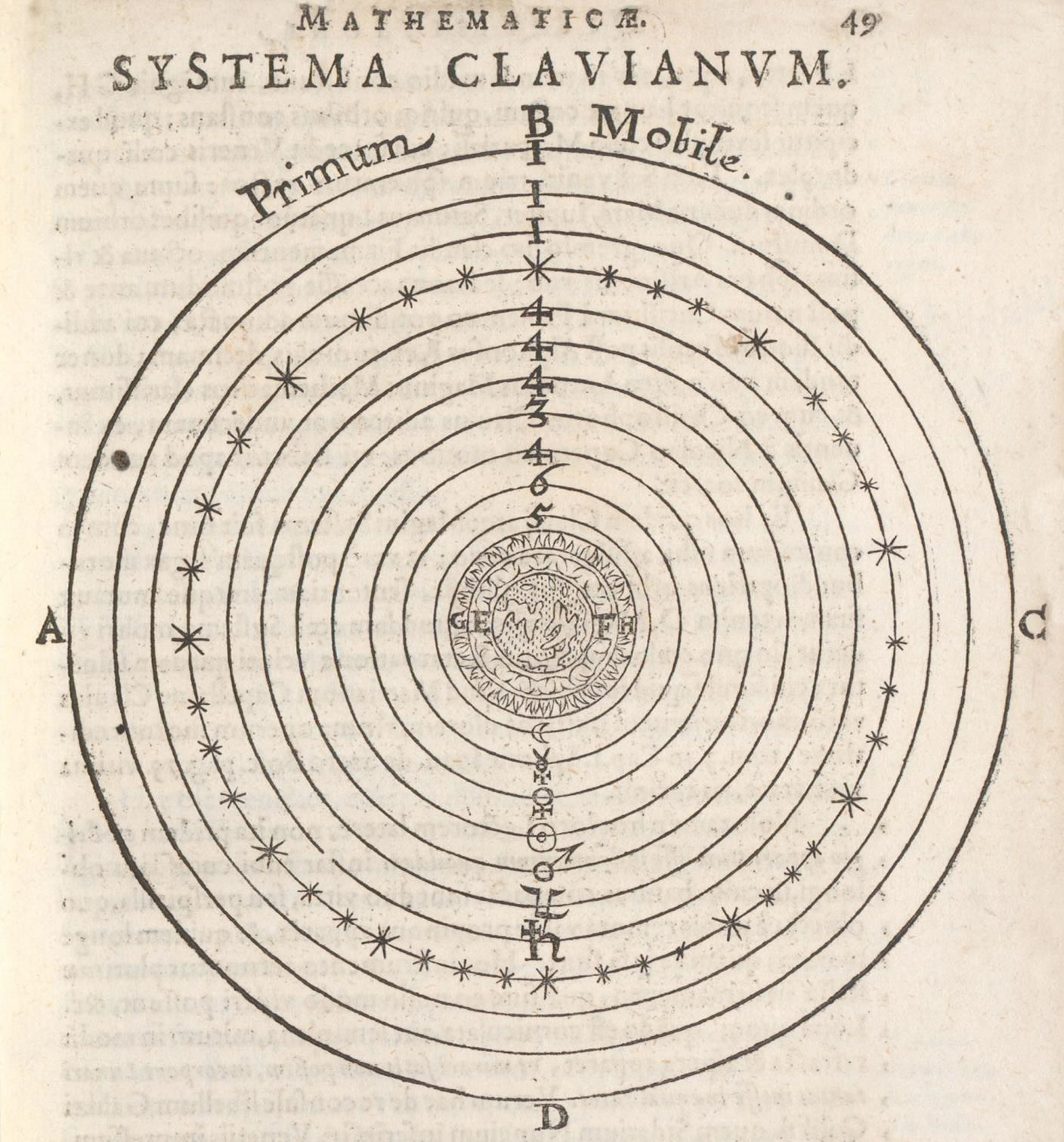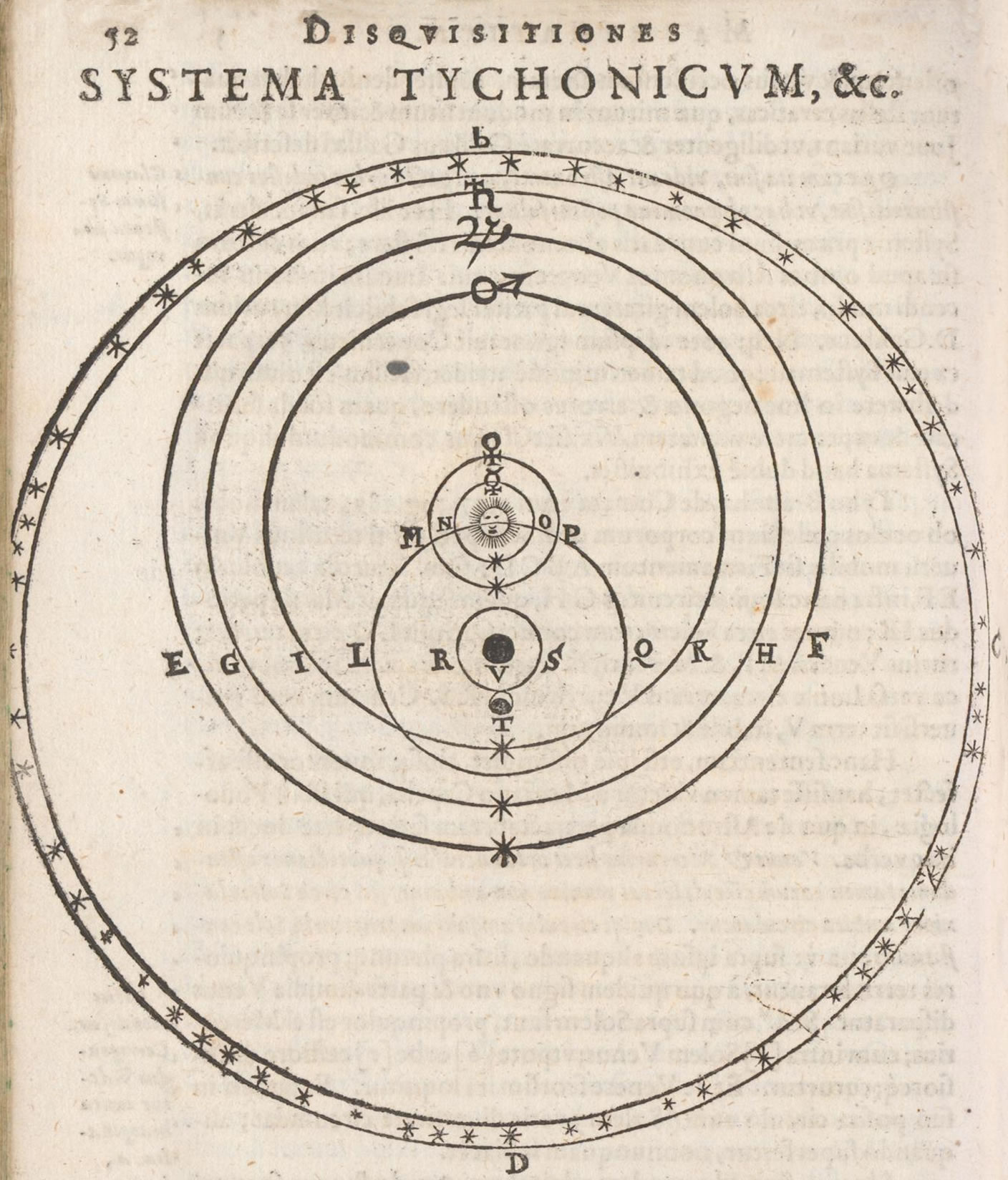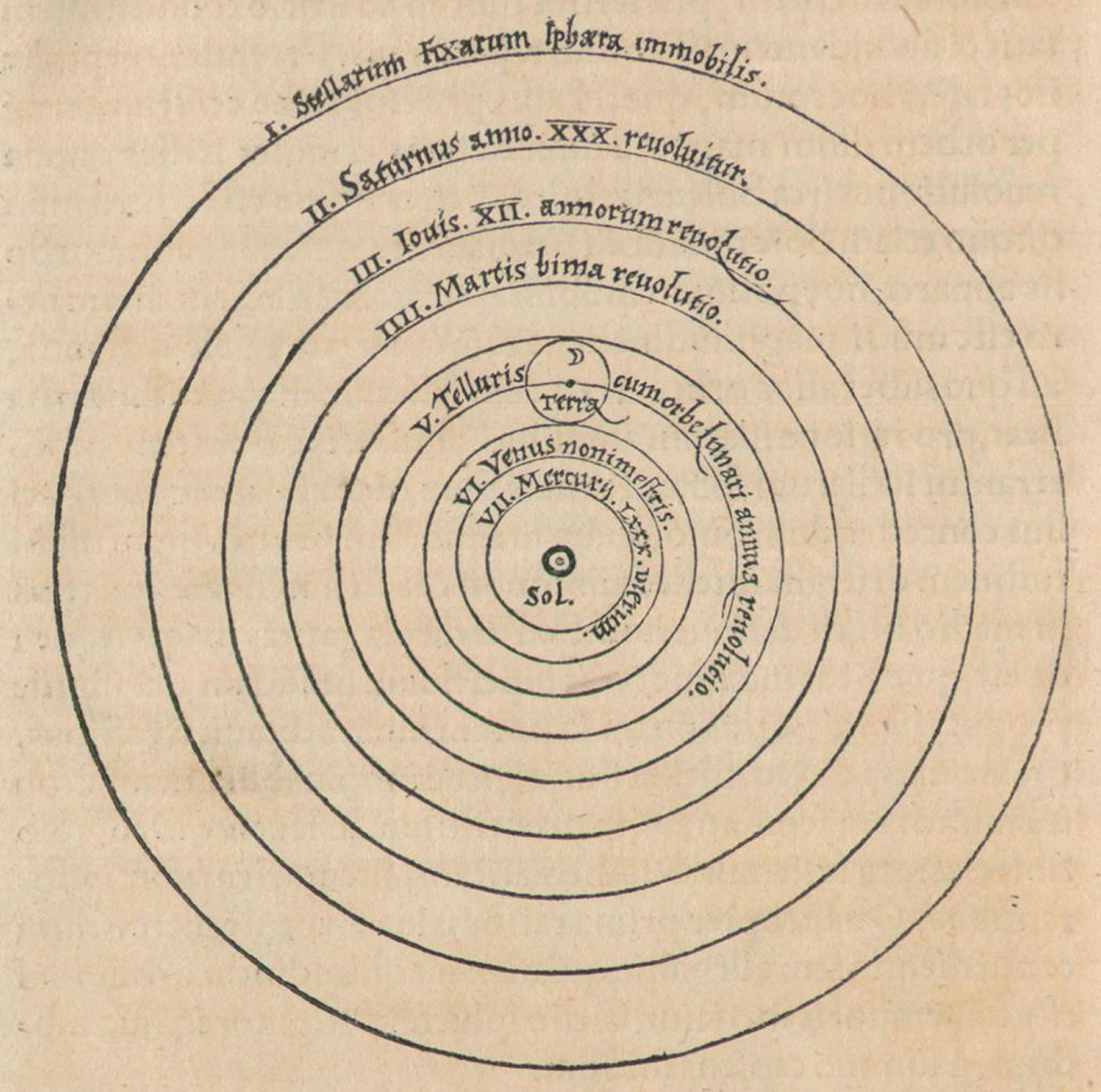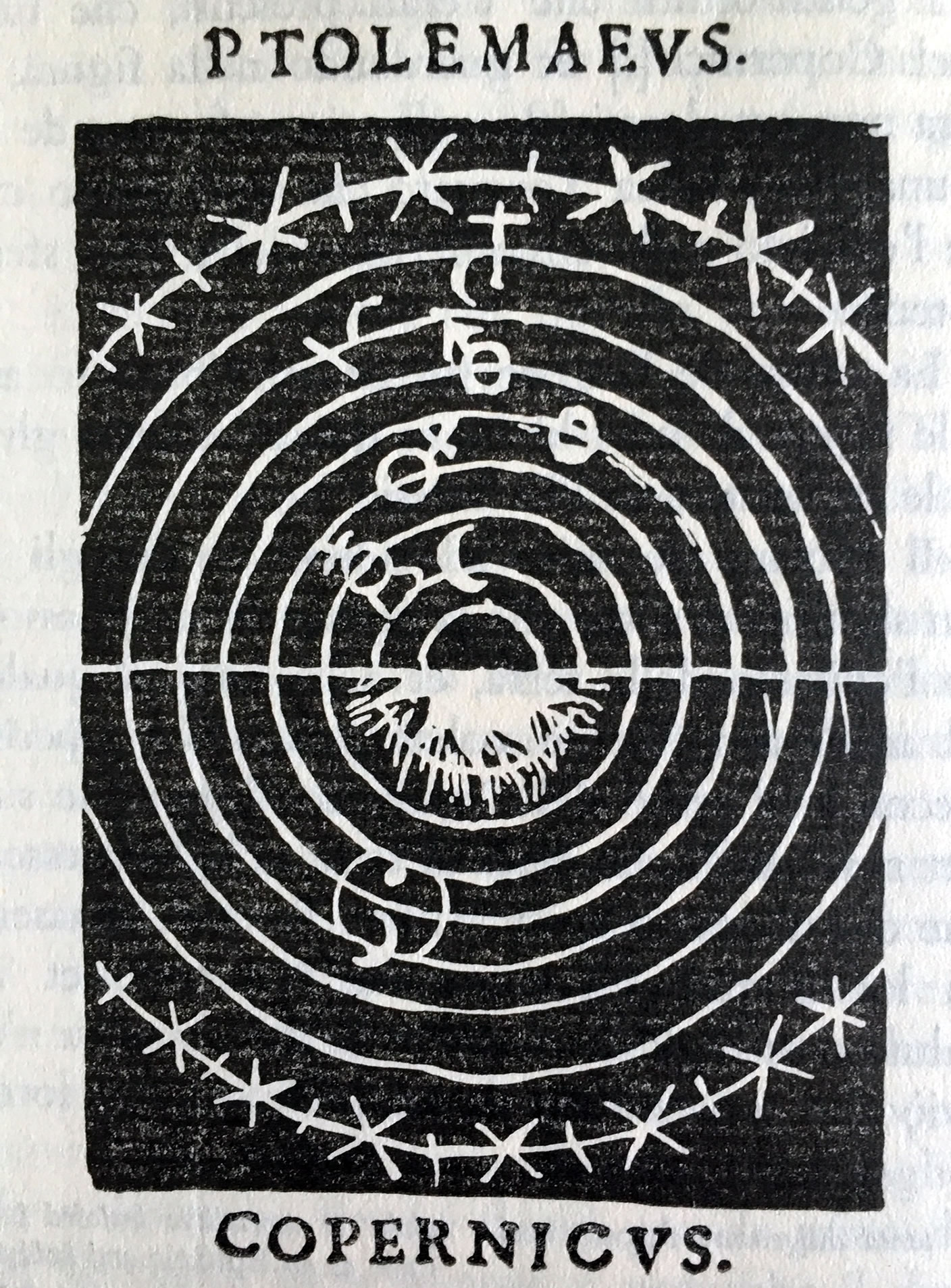The debate about the world systems
In Galileo's time, scientists had developed various models of the universe linked in complicated ways and called "world systems". In the first half of the seventeenth century in particular, a fierce quarrel raged between the representatives of the Copernican system (above all Kepler and Galileo) and the defendants of the geocentric way of thinking, who went not only by the ancient model but also by the new world system of Tycho Brahe.
The geocentric world system
The traditional geocentric and geostatic system was derived from the teachings of Ptolemy, with its focus on the sublunar spheres of earth, water and fire. Then above them the celestial spheres
- First the seven spheres of the planets: Moon, Mercury, Venus, Sun, Mars, Jupiter and Saturn
- Then the sphere of the stars
- Last of all the sphere of primum mobile, which made it possible to account for the daily rotation of the other celestial spheres.

The illustration from the external page "Disquisitiones mathematicae" (1614) by Christoph Scheiner (1573–1650) shows a simplified world system conceived by the mathematician Cristoforo Clavio (1537–1612). It corresponds neither to the original by Aristotle nor that of Ptolemy. A conflict between two schools of thought had been smouldering among the traditionalists for centuries. One group relied solely on mathematics and accepted the model of the universe only as a hypothesis to calculate stars and their positions. The other, known as philosophical astronomers, sought a model corresponding to physical reality.
Tycho Brahe's world system

In the second half of the sixteenth century the Danish astronomer Tycho Brahe (1546–1601) developed a model that combined a geocentric and a heliocentric system. Around the motionless globe in the middle of the universe moves the moon in one month, the sun in one year and around them the planets trace their orbits. The stellar sphere is responsible for the daily rotation. This model, which despite geocentrism is very different from the ancient models, was based on the assumption that the various celestial spheres consisted of liquid matter. It was also used by Galileo's arch-enemy Christoph Scheiner.
The Copernican world system

In the world system of the mathematician Nicolaus Copernicus (1473–1543), the motionless sun is the centre of the universe. Also motionless is the stellar sphere that encircles the universe. The planets orbit the sun in the following order: Mercury, Venus, Earth, Mars, Jupiter, Saturn. The Earth rotates around its own axis in 24 hours and – together with its satellite, the Moon – orbits the Sun once in a year. Published in 1543, the Copernican world view was tolerated by the Roman Catholic Church for some 70 years, until 1616. It was rejected all the more vehemently during the sixteenth century in Protestant circles, particularly violently by the reformer Philipp Melanchthon (1497–1560).
The two world systems compared

In the Ash Wednesday Supper (La Cena de le Ceneri, 1584) by Giordano Bruno (1548–1600), this illustration appears in which Bruno shows how the Ptolemaic world system – simply by having the Earth and the Moon take the place of the Sun and the Sun itself moving into the centre of the universe, instead of the Earth and the Moon – becomes the Copernican system.